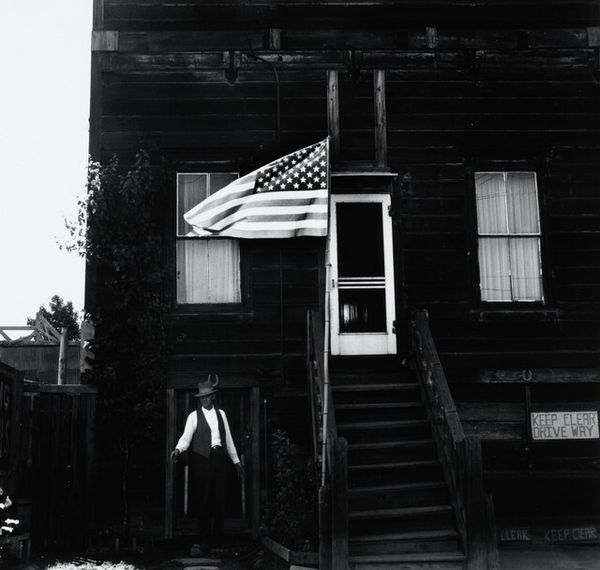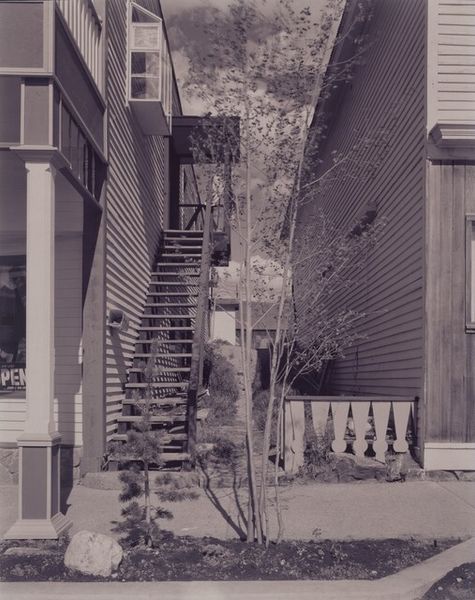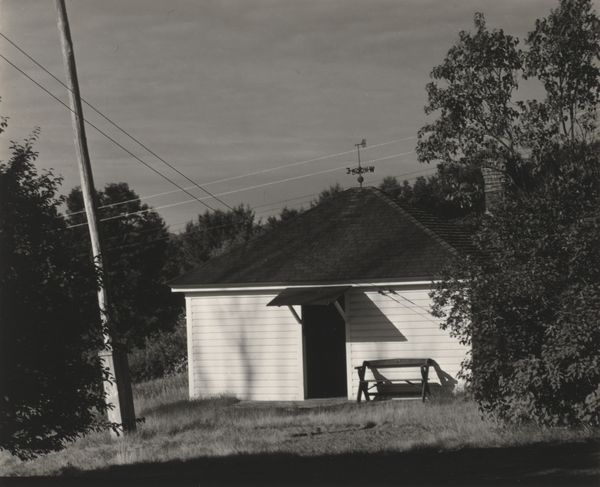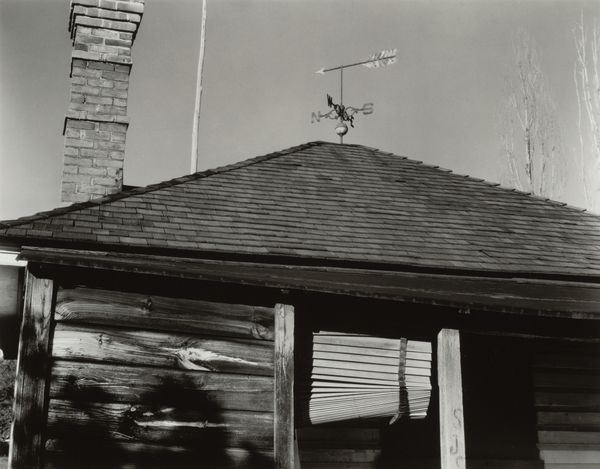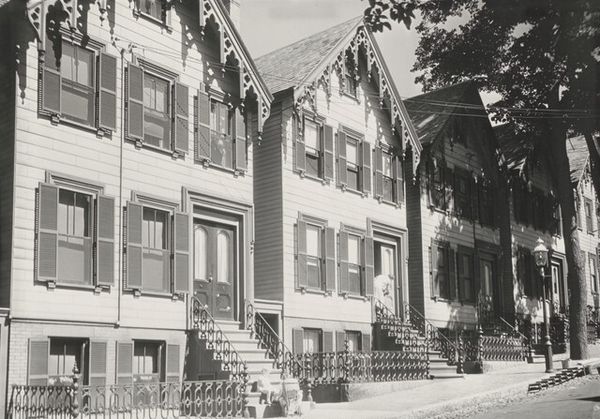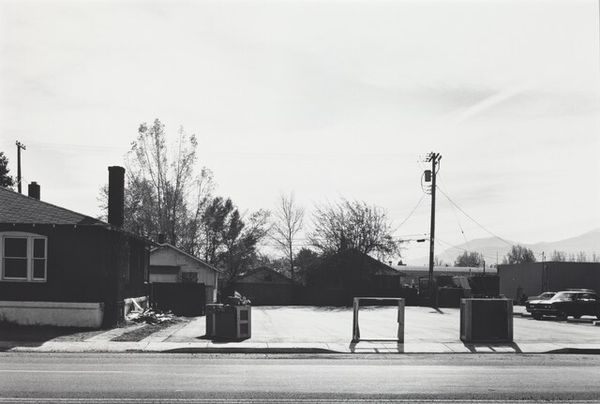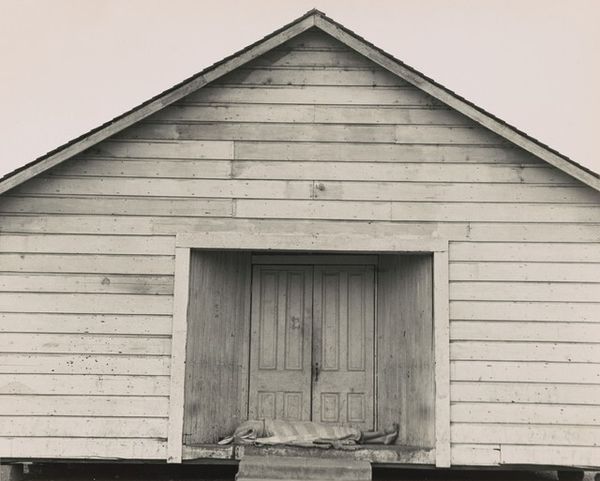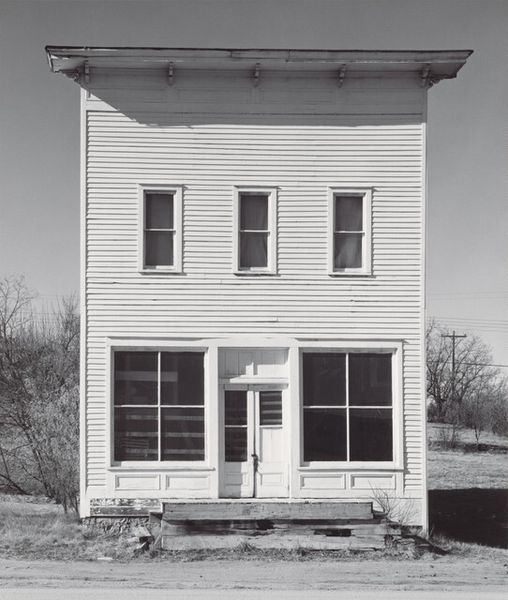
Man on Mr. Piper’s Steps, West Oakland, California c. 1963 - 1971
0:00
0:00
photography
#
black and white photography
#
sculpture
#
black and white format
#
street-photography
#
photography
#
black and white
#
cityscape
#
monochrome
#
realism
#
monochrome
Dimensions: image (visible): 24.7 × 25 cm (9 3/4 × 9 13/16 in.) matted: 60.8 × 45.6 cm (23 15/16 × 17 15/16 in.)
Copyright: National Gallery of Art: CC0 1.0
Curator: Joanne Leonard's "Man on Mr. Piper’s Steps, West Oakland, California," likely taken between 1963 and 1971, immediately strikes me with its almost oppressive sense of shadow and angularity. Editor: The contrast is certainly stark, but what jumps out to me is the immediate context of West Oakland in those years. This photograph doesn’t just depict a man on some steps; it captures a specific moment of urban life, shaped by economic forces and social conditions. Curator: I see your point about the context, but let's focus on the photographic qualities first. Notice how Leonard frames the subject climbing the stairs, his figure almost swallowed by the dark facade of the building. The composition itself creates a feeling of anonymity and perhaps even alienation. And the diagonals of the power lines slice through the sky, disrupting what would otherwise be a more static image. Editor: Right, the image feels static on the surface, but if we dig a bit, we realize the whole setting is in a state of flux. Think about the labor required to build these houses, the availability of material and its value. Consider Mr. Piper's economic standing—was he the landlord, or someone struggling to make ends meet? Leonard captures the result, and in these moments of everyday life you can interpret class and consumption. Curator: I suppose those details lend an air of lived-in authenticity, but let’s not disregard the formal elements. The textures, the patterns of light and shadow, the deliberate composition—all these things contribute to its aesthetic power. Notice the geometric rigor, from the stairs themselves to the rectangular shape of the house; even the placement of windows. These choices create an impact. Editor: But those very textures tell a material story, don't they? The peeling paint, the worn wood of the steps—they speak of deferred maintenance, perhaps a sign of economic hardship. The very existence of those power lines above highlight infrastructural inequalities; the labor involved in stringing those wires, bringing power to some homes while neglecting others nearby. Curator: Still, that focus neglects her technique, doesn’t it? Editor: I would agree it can be interpreted both ways. To that point, I think Leonard is presenting the audience with both a document of social condition and how the community's economic position affected its visual landscape. Curator: Perhaps our appreciation lies in acknowledging that Leonard has synthesized those social forces and artistic expression into one striking, thought-provoking piece. Editor: Agreed. By investigating both production and structure, the photograph invites multiple levels of observation.
Comments
No comments
Be the first to comment and join the conversation on the ultimate creative platform.
